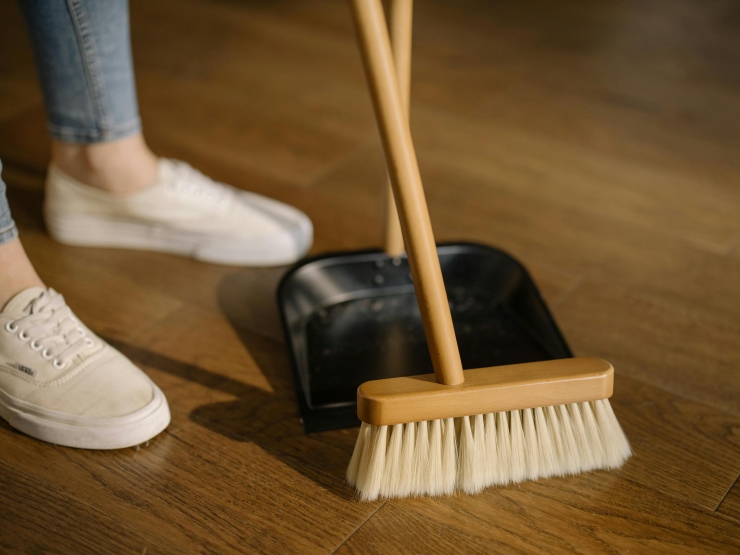Why Dust Is Bad For You
The odd bit of dust in your home won’t cause you too many issues. But if you allow large amounts of dust to build up over time, you put yourself and anyone else in your home at risk of a few adverse health conditions.
Even low levels of dust may lead to eye irritation, coughing, and/or sneezing. Dust is more troublesome for asthma sufferers and even low levels of dust can potentially aggravate asthma symptoms.
High levels of dust in your home can have a more serious impact on your health, potentially leading to respiratory problems.
It’s also worth noting that 10% of people are believed to suffer from a dust allergy. For those who suffer from a dust allergy, living in a dusty home can cause regular sneezing fits and watery eyes, making it even more important to keep your home dust-free.
Dustiest Places in Your Home
- On top of mantelpieces or high shelves
- On top of kitchen cabinets
- Underneath appliances
- Underneath furniture
- Underneath rugs
- Ceiling fan
How to Tackle Dust in Your Home
Regular cleaning
Some areas of your house need more attention than others. For instance, your kitchen will need a little more attention than most other parts of your home due to food spills. Other, lesser used areas of your home are fine to be cleaned around once a week.
The most important thing is to ensure that every area of the home gets cleaned. Many of the high-dust areas in your home are there simply because they’ve been forgotten about. Make sure any weekly cleaning doesn’t discount the areas you can’t see such as underneath furniture and appliances.
It is important to clean, especially if you have things like construction contractors Singapore scheduled. Dusk is renowned for getting in every single place so be sure to pack your things securely and clean as regularly as possible.
Mop instead of sweep
Sweeping up is probably part of your cleaning routine, but mopping is far more effective when it comes to eliminating dust. If you have a dusty home, sweeping may mean you’re simply pushing dust to a different area of your home. Dry mopping followed by wet mopping can help tackle more stubborn dust particles and ensure particles are actually being collected and eliminated from your home.
Wash your hands regularly
Our hands can collect dust from just about anything we touch. As a result, regularly washing your hands can go a long way to keeping dust out of your home.
Experts believe that we should wash our hands between six and ten times a day, while the NHS website recommends that each hand wash should take approximately 40 seconds.
Invest in an air purifier
Possibly the most expensive way to deal with dust, but also one of the most effective and the one that requires the least effort.
A Dyson HEPA Cool Formaldehyde will cost you around £400–500, but on the flip side, Dyson claims their purifiers remove 99.95% of dust particles.
The most important thing to remember if you’re trying to control dust in your home is to carry out general home maintenance at least once a week. If you’re trying to maintain something bigger than a house, like an industrial building, consider contacting facilities management companies in Yorkshire and other parts of the UK.


























Add comment